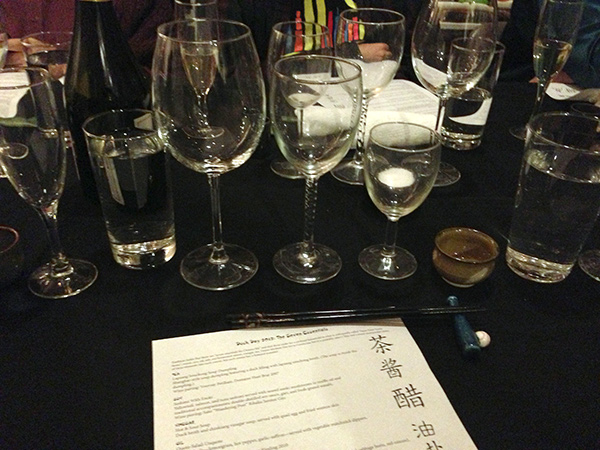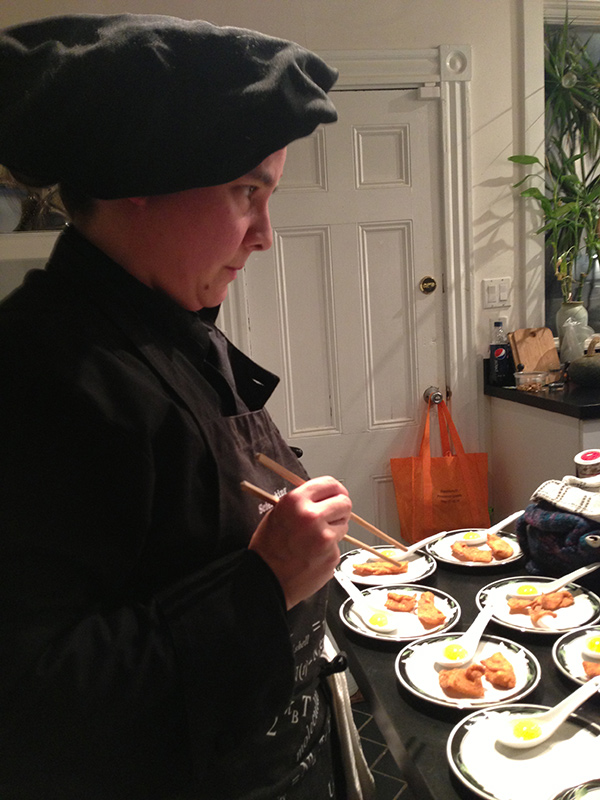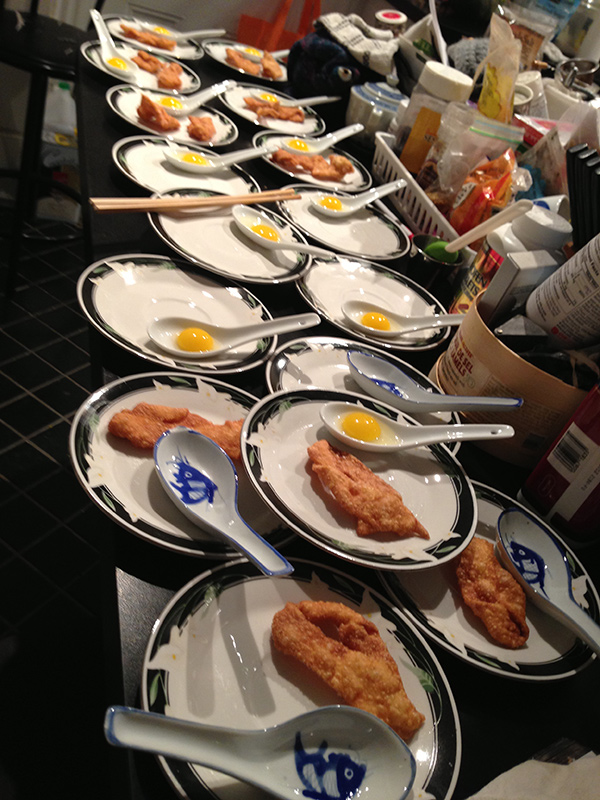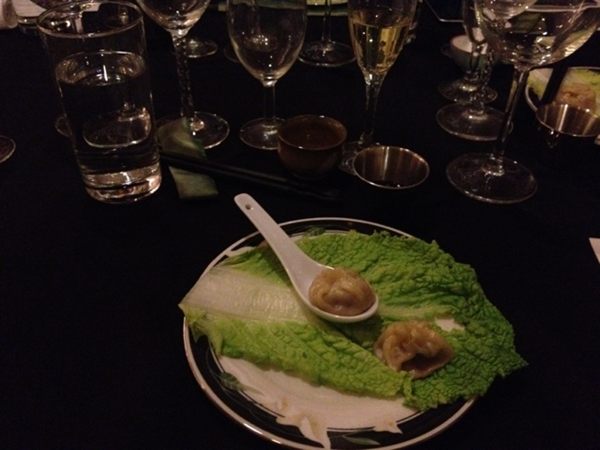Since I often forget to take pictures as we go along (though my iPhone and Twitter have made that less of a problem than it used to be) I asked guests at the meal to take pictures, too! Here are some, including a course I managed not to get any photos of prep or service, the “Hot and Sour Soup.”
The concept in this dish was to feature the vinegar, since it was the Vinegar course. (Vinegar being one of the Seven Essentials, see original post for explanation on that.)
I didn’t want a traditional, slimy “hot and sour” soup. I wanted to highlight vinegar as a desirable flavor of its own. And duck, of course. My thought was to make it more like a consomme, with duck broth (we make a ton of duck stock for this meal), just a touch of “hot”.
We bought a few vinegars to try in the soup, including a palm sugar vinegar, Chinese “chinkiang” vinegar, and we have a ton of rice wine, white, sherry, balsamic, etc… stocked here to begin with.
Sherry vinegar, even at 1/2 teaspoon per 1/2 cup was way too strong and just not a good flavor. The palm sugar vinegar I liked but corwin said it tasted like floor cleaner chemicals to him. Chinkiang, though, was the perfect thing. It was like all the intensity of fish sauce without any fish–and is what I’ll replace fish sauce with in vegetarian recipes from now on. In the end, the proper balance was per one cup of soup, one teaspooon chinkiang and half-teaspoon white vinegar, then upon serving the bowl, one more half teaspoon dash of fresh chinkiang from the bottle.
We served it with a raw quail egg and fried wonton skins. This was my first time making wonton skins from scratch, again using Andrea Nguyen’s “Asian Dumplings” cookbook, which recommended using the pasta machine to get them really thin and flat. We love an excuse to use the pasta machine!
One of our guests had never had a quail egg before. I usually describe it as like a buttery chicken egg.




And here’s a guest’s shot of the Shanghai Soup Dumpling, which I talked about in a previous post.

